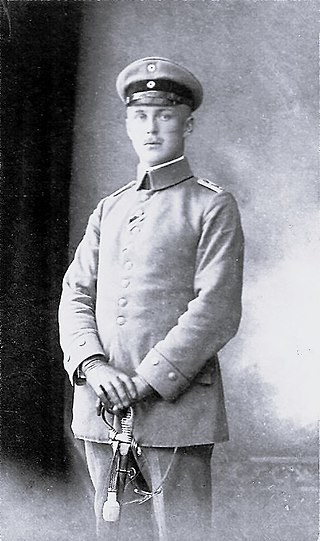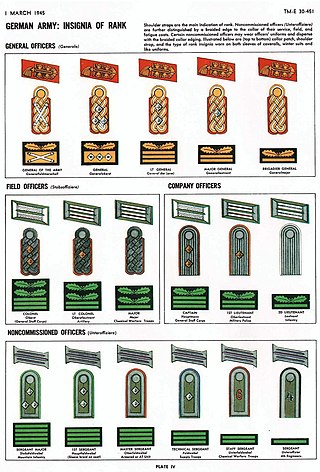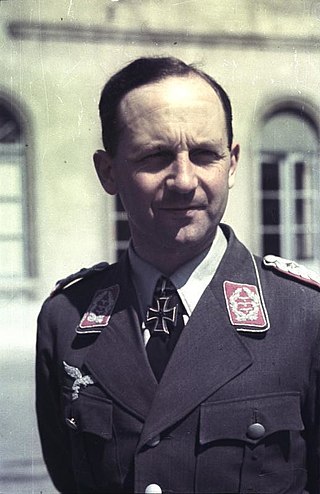Basic structure of shoulder straps and sleeve insignias
The rank insignias of all service personnel will be explained initially on the example of shoulder straps to the basic uniform or everyday uniform in order provide a general overview.
As to naval persons in uniform there will be additionally depicted sleeve insignias on the uniform jacket. Pertaining army persons in uniform there will be shown next shoulder straps of the uniform jacket. Variations of the first instance depicted rank insignias will be explained in more detail.
Commissioned officer ranks
The rank insignia of commissioned officers.
| NATO code | OF-10 | OF-9 | OF-8 | OF-7 | OF-6 | OF-5 | OF-4 | OF-3 | OF-2 | OF-1 | OF(D) | Student officer | ||||||||||||||||||||||||
|---|---|---|---|---|---|---|---|---|---|---|---|---|---|---|---|---|---|---|---|---|---|---|---|---|---|---|---|---|---|---|---|---|---|---|---|---|
 |  |  |  |  |  |  |  |  |  |  |  |  |  | Enlisted rank plus bottom thin silver cord indicating cadet's career | ||||||||||||||||||||||
| General | Generalleutnant | Generalmajor | Brigadegeneral | Oberst | Oberstleutnant | Major | Stabshauptmann | Hauptmann | Oberleutnant | Leutnant | Oberfähnrich | Fähnrich | Fahnenjunker | |||||||||||||||||||||||
 |  |  |  |  |  |  |  |  |  |  |  |  |  | Enlisted rank plus a star indicating cadet's career | ||||||||||||||||||||||
| Admiral | Vizeadmiral | Konteradmiral | Flottillenadmiral | Kapitän zur See | Fregattenkapitän | Korvettenkapitän | Stabskapitänleutnant | Kapitänleutnant | Oberleutnant zur See | Leutnant zur See | Oberfähnrich zur See | Fähnrich zur See | Seekadett | |||||||||||||||||||||||
 |  |  |  |  |  |  |  |  |  |  |  |  |  | Enlisted rank plus bottom thin silver cord indicating cadet's career | ||||||||||||||||||||||
| General | Generalleutnant | Generalmajor | Brigadegeneral | Oberst | Oberstleutnant | Major | Stabshauptmann | Hauptmann | Oberleutnant | Leutnant | Oberfähnrich | Fähnrich | Fahnenjunker | |||||||||||||||||||||||
| NATO code | OF-10 | OF-9 | OF-8 | OF-7 | OF-6 | OF-5 | OF-4 | OF-3 | OF-2 | OF-1 | OF(D) | Student officer | ||||||||||||||||||||||||
Other ranks
The rank insignia of non-commissioned officers and enlisted personnel.
Variations
Army- and Air Force persons in uniform of the commissioned officers rank group may carry in line with ZDv 37/10 self-procured hand stitched rank insignias (image: d.) instead of the metallic version (image: e.). However, this type of rank insignias is rather seldom in practice. Beside the rank insignia on light-grey shoulder straps, as shown above, there is to army persons in uniform a version (see image a.) on dark grey cloth. This version of shoulder straps will be worn to uniform shirt and overcoat.
Naval persons in uniform, of the enlisted personnel rank group, wear relatively seldom the dark blue jacket with the above indicated cuff titles, because enlisted mariner in the age below 30 years prefer to wear the white shirt or blue shirt instead of the uniform jacked. Sleeve insignias on shirts more simple, but pertaining form and dimensions identically to those on jackets.
- a. Dark grey shoulder strap - Heer (here: Stabsunteroffizier armored corps)
- b. Cuff title to the dark blue seaman shirt (here: Oberstabsgefreiter with a seamanship rating)
- c. Cuff title to the dark white seaman shirt (here: Obergefreiter with a control & communications rating)
- d. Shoulder strap dress uniform strap (hand stitched version) - Heer (here: captain - OF2)
- e. Shoulder strap basic form (metallic version) - Heer (here: lieutenant - OF1b infantry)
 |  |
In the place of stripes, with parts of metallic spinning fibers wire yarn, the oblique chevrons are made from golden-yellow or steel-blue spinning fibers without any metallic parts of wire yarn (see images b and c.). For Army and Air Force personnel in Bundeswehr dress uniform, as well as for all female soldiers, shoulder straps are mandatory. However, male naval persons in uniform wear cuff titles, known from the jacket.
Particularities
Deviating from the description above, naval enlisted personnel of the Guard Battalion of the MOD-Germany (de: Wachbataillon beim BMVg) are exempted from wearing any sleeve rating mark on all uniforms, instead wearing their insignia on shoulder boards.
In opposition to the ZDv 37/10, in representative military units (e.g. Guard Battalion of the MOD-Germany and Staff Military Band of the Armed Forces) for enlisted personnel and non commissioned officers the background of the basic uniform gorget patches shows the specific corps colour of the appropriate armed service, special troop, corps or assignment. [4]
Also in deviation from the description above, on the service jacket and skiing blouse colour pipings or cops background colour on gorget patches are dropped. [4]






























































































































